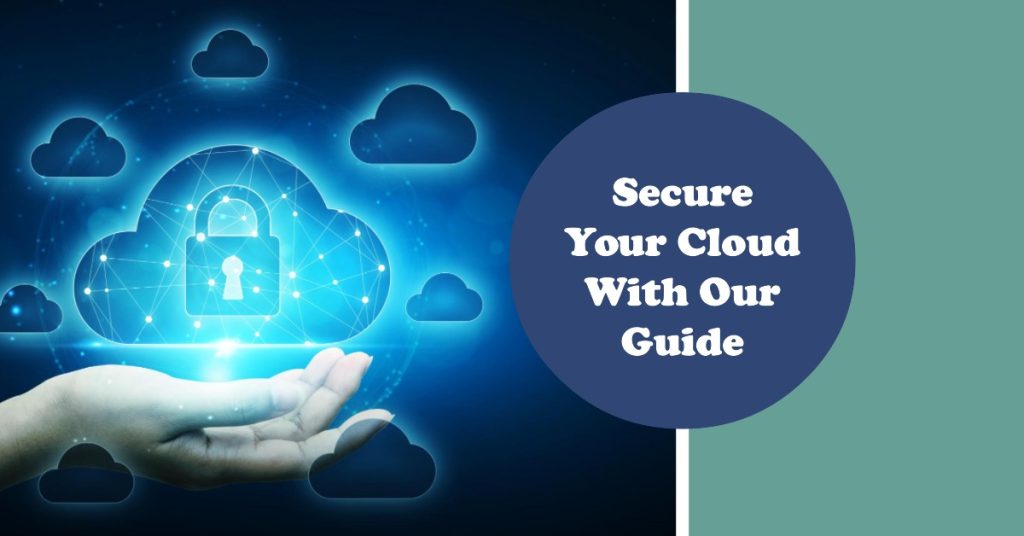The convenience and scalability offered by cloud services have transformed the way we work and collaborate. However, with great power comes great responsibility. Cloud security is paramount, as it safeguards our digital assets from cyber threats and data breaches. Here, you’ll explore the essentials of cloud security, learning more about the jargon and gaining insight on actionable tips to keep your digital haven secure.
The Importance of Cloud Security
The importance of cloud security cannot be overstated in today’s interconnected world. As businesses and individuals increasingly rely on cloud services to store and manage their data, the need to protect that data from a multitude of potential threats becomes paramount. Cloud security serves as the digital fortress that shields sensitive information from cybercriminals, hackers, and malicious actors. Without adequate security measures in place, organizations risk not only financial losses but also damage to their reputation and customer trust.
Moreover, compliance with industry and government regulations is a critical aspect of cloud security. Many sectors, such as healthcare, finance, and e-commerce, have stringent requirements for data protection and privacy. Failure to meet these standards can result in hefty fines and legal repercussions. Thus, cloud security not only safeguards data but also ensures that businesses remain in good standing with regulatory authorities. In this era of digital transformation, where data is the lifeblood of many enterprises, investing in cloud security is not just an option; it’s a strategic imperative for sustainable growth and success.
So, why is cloud security so important? Here’s a quick summary:
Data Protection:
Your data is your most valuable asset. Whether it’s sensitive business information or personal photos, safeguarding it is crucial. Cloud security measures ensure that your data is encrypted and protected from unauthorized access.
Compliance:
Many industries have strict regulatory requirements for data handling and storage. Cloud security helps businesses meet these compliance standards, avoiding hefty fines and legal troubles.
Business Continuity:
Cloud security also plays a pivotal role in ensuring business continuity. Disaster recovery plans and data backups are integral parts of cloud security, minimizing downtime in the event of a cyberattack or natural disaster.
Cost Efficiency:
While investing in cloud security may seem like an expense, it can save you a fortune in the long run. Preventing data breaches and downtime can spare your organization from significant financial losses and reputational damage.
Common Cloud Security Threats
According to expert Anne Neuberger, the most common cloud security threats are:
Phishing Attacks:
Phishing emails are a prevalent threat. They attempt to trick users into revealing sensitive information or installing malware. Always be cautious when clicking on links or downloading attachments from unknown sources.
Data Breaches:
Unauthorized access to your cloud data can lead to devastating consequences. Weak passwords, misconfigured settings, or insider threats can result in data breaches. Implement strong authentication methods and regularly review access permissions.
Malware and Ransomware:
Malicious software can infect your cloud infrastructure, encrypting or stealing your data. Regularly update antivirus and anti-malware software to prevent these attacks.
Insider Threats:
Employees or contractors with access to your cloud resources can pose a threat. Conduct thorough background checks, and limit access to the minimum required for each role.
Data Loss:
Accidental data deletion or corruption can be as damaging as a cyberattack. Regularly back up your data and implement versioning to recover lost files.
Best Practices for Cloud Security
What are the best ways to keep your data safe from hackers? Here are some of the best practices:
Multi-Factor Authentication (MFA):
Enable MFA for all cloud accounts. This adds an extra layer of security by requiring users to provide multiple forms of identification.
Strong Passwords:
Use complex passwords that include a combination of upper and lower-case letters, numbers, and special characters. Avoid using easily guessable information like birthdays or names.
Regular Software Updates:
Keep your cloud applications and operating systems up to date. Developers frequently release security patches to address vulnerabilities.
Data Encryption:
Use encryption to protect your data both at rest and in transit. Many cloud providers offer encryption options, so take advantage of them.
Access Control:
Implement strict access controls to limit who can access your cloud resources. Review and revoke access when employees leave the organization or change roles.
Final Thoughts
In the ever-evolving landscape of cloud computing, security remains paramount. By understanding the importance of cloud security, recognizing common threats, and implementing best practices, you can fortify your digital haven against cyberattacks and data breaches. Remember, your data is your responsibility, and safeguarding it is not only a prudent choice but a necessity in today’s interconnected world. Stay vigilant, stay secure, and enjoy the many benefits that the cloud has to offer while keeping your digital assets safe and sound.
